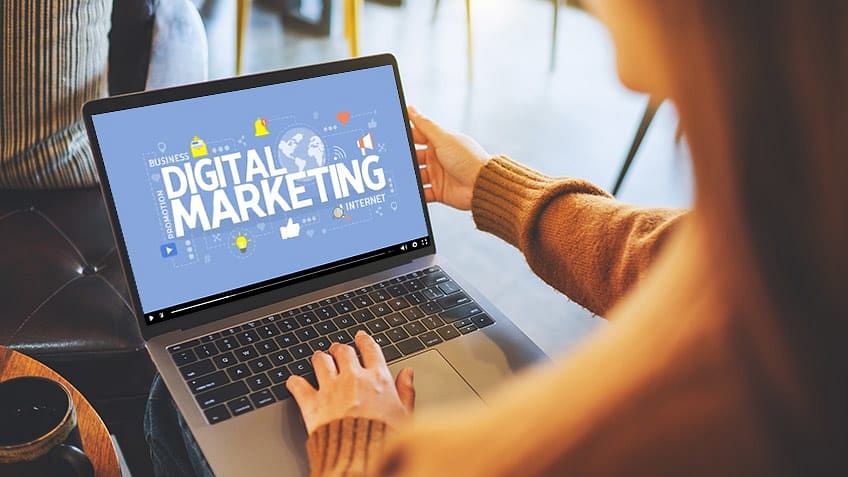Revealing the Proficiency of The Ad Firm: Your Gateway to Exceptional Solutions
Revealing the Proficiency of The Ad Firm: Your Gateway to Exceptional Solutions
Blog Article
Enhance Individual Experience and Drive Website Traffic With Receptive Web Design
In today's electronic landscape, where individuals are accessing web sites from a wide variety of devices, responsive internet style has come to be much more essential than ever before. With its capacity to adjust and seamlessly readjust to different screen dimensions, receptive layout not only boosts individual experience but additionally drives traffic to your internet site.
Why Receptive Web Layout Matters
Receptive website design is an essential facet of contemporary web growth because of its capability to guarantee ideal user experience throughout numerous gadgets and screen sizes. With the spreading of mobile phones, tablets, and various other mobile devices, it has actually ended up being essential for sites to adjust and give smooth capability despite the tool being used.
The main reason why responsive web design matters is that it permits customers to have a enjoyable and constant surfing experience, no matter of the tool they are making use of. A responsive internet site immediately readjusts its design, layout, and material components to fit the screen size and resolution of the device, ensuring that individuals can conveniently navigate and communicate with the site without any kind of trouble or frustration.
In addition, responsive website design likewise plays a significant role in seo (SEO) Internet search engine, such as Google, prioritize web sites that are mobile-friendly and responsive in their search results page. By incorporating responsive layout concepts, sites can enhance their visibility and position, resulting in raised natural website traffic and prospective customers.

Boosting Individual Involvement With Responsive Style
Maximizing individual involvement is a key objective of responsive design, as it guarantees that users can easily gain access to and communicate with website material on any kind of gadget. With the increasing use tablets and mobile phones, it is crucial for websites to adapt to various display dimensions and resolutions. Receptive design enables websites to immediately adjust their design and web content to give a seamless user experience across gadgets.
Among the major methods responsive layout boosts user engagement is by lowering load times. With a receptive website, individuals do not need to wait for separate mobile variations to load, causing quicker accessibility to web content. This better rate causes greater individual contentment and motivates them to spend more time on the site.
Additionally, responsive design enhances user involvement by boosting navigation and user interface (Web Design). When a site is created responsively, menus and switches are optimized for touch interactions, making it much easier for individuals to navigate and communicate with the website on their mobile phones. This user-friendly and instinctive experience maintains individuals involved and urges them to discover even more of the site
Additionally, receptive style permits much better content exposure and readability. By adapting the design and font dimensions to different tools, responsive internet sites make sure that users can conveniently understand the material and read. This enhances user involvement by reducing the requirement for scrolling or zooming to check out the message.
Enhancing Internet Site Traffic With Responsive Website Design
With the expanding appeal of smart phones, having a web site that is receptive to various screen dimensions and resolutions is vital for driving enhanced web traffic. In today's electronic landscape, users are accessing sites from a selection of gadgets such as smart devices, tablet computers, and desktop computers. Each of these tools has different display sizes and resolutions, and if your internet site is not developed to adjust to these variations, it can cause a poor customer experience i thought about this and a loss of potential web traffic.
Responsive internet layout ensures that your site looks and works efficiently throughout all devices. By utilizing versatile grids, liquid photos, and media queries, responsive style allows your website to immediately adjust its content, navigating, this post and design to fit any kind of display size. This indicates that users will have a seamless browsing experience despite whether they are using a large desktop computer or a little mobile phone computer.
Secret Aspects of Effective Responsive Design
Effective receptive layout includes numerous key elements that make sure a seamless customer experience throughout different gadgets. Among these elements is flexible grids and formats. By utilizing relative units like percents instead of dealt with units like pixels, developers can create designs that adapt and scale to fit various display dimensions. This enables material to be shown in a legible and visually appealing manner on any tool.
An additional essential element is media inquiries. These allow developers to apply various designs and layouts based upon the features of the individual's device, such as screen size and orientation. By using media questions, designers can optimize the discussion of web content for every tool, making certain that it is quickly available and legible.
Receptive images are likewise critical in efficient receptive layout. Photos that are also big can reduce page load times on smart phones, while photos that are too little might appear pixelated on larger screens. By utilizing methods such as responsive photo resizing and careless loading, developers can make sure that images are suitably sized and enhanced for every gadget.
Finally, effective responsive style involves a mobile-first approach. This suggests making and focusing on content for mobile devices initially, and after that broadening and improving the design for bigger screens. This method guarantees that the most crucial material is easily obtainable on smaller screens, while still giving an abundant experience on larger tools.
Ideal Practices for Implementing Responsive Web Design
Executing responsive website design requires careful factor to consider of different finest techniques to make sure an find more info ideal customer experience throughout different gadgets. Here are some crucial ideal methods to comply with when implementing responsive website design.
Firstly, it is essential to focus on mobile individuals. With the boosting prominence of mobile phones, making for mobile-first has ended up being necessary. Start by making for smaller displays and after that considerably improve the design for larger displays.

Another crucial ideal practice is to optimize photos for different display resolutions. Big photos can decrease the filling time of your internet site, particularly on smart phones with slower links. Use responsive photos that can be resized based upon the device's screen resolution to enhance performance.
In addition, test your web site on various devices and screen sizes to make sure a constant and smooth experience. There are different testing devices offered that can help you determine any kind of problems and make needed modifications.
Lastly, focus on usability and availability. Guarantee that your site is simple to browse, with clear and succinct content. Ensure that your website comes to individuals with specials needs and complies with availability standards.
Verdict
In final thought, responsive web layout plays an essential role in boosting user experience and driving traffic to websites. By embracing responsive layout concepts, internet sites can ensure optimum checking out experiences across various devices, leading to boosted user involvement.
Optimizing customer interaction is a key goal of receptive design, as it makes certain that individuals can conveniently gain access to and interact with web site content on any type of tool. Responsive style makes it possible for web sites to automatically change their format and content to give a seamless individual experience throughout tools.
Additionally, receptive design boosts customer engagement by enhancing navigating and user interface.Responsive pictures are additionally vital in effective responsive style. By embracing receptive layout principles, sites can make sure optimum seeing experiences across various devices, leading to increased user interaction.
Report this page